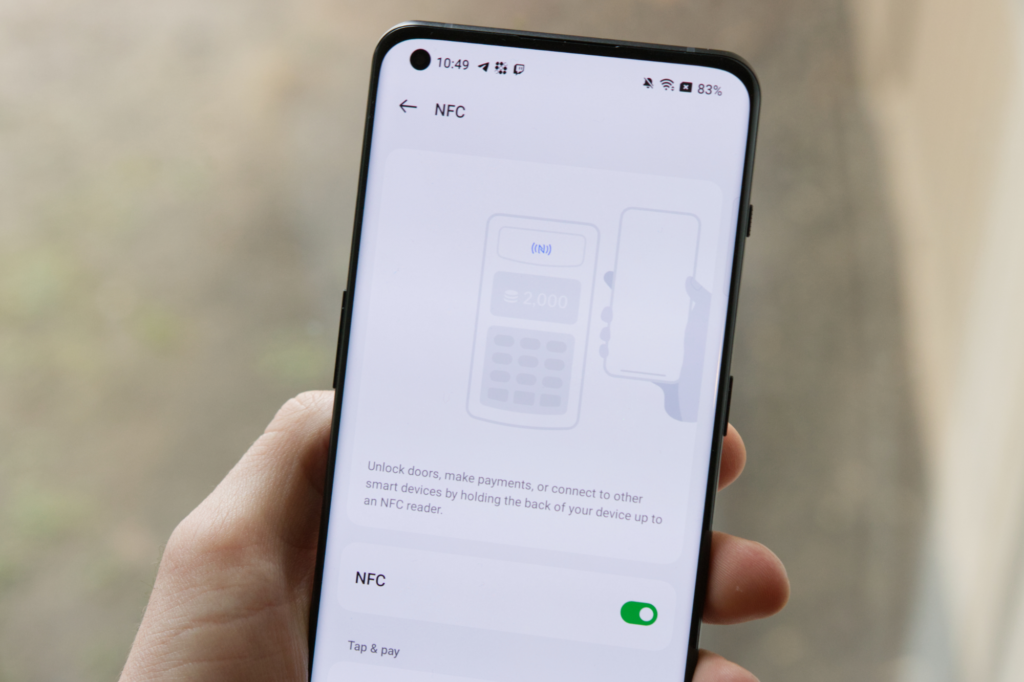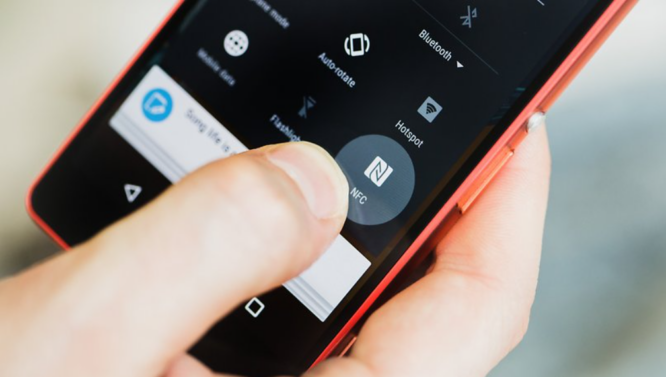Near-field communication, or NFC, has been a common acronym on tech devices for years, so we don’t blame you if you’ve forgotten what it stands for. NFC technology, which is frequently designated by a “N” logo, has become a necessity for all mobile phone consumers.
Since COVID-19, its significance as a contactless method of device interaction has increased. Here is how NFC works and everything you need to know about its current state.
What exactly is NFC?
NFC is a wireless communication technology that enables devices in close proximity to seamlessly connect and communicate with one another. It has a very limited range and typically functions best when devices are within an inch or two.

NFC technology is available in various forms but is renowned for its simplicity, usability, and affordability.
Compared to passive NFC
NFC technology can be active or passive. Active NFC technology is capable of transmitting and receiving data, but it requires a power source and supplementary hardware.
Passive NFC technology, typically found in NFC “tags,” consists of basic coils with a microchip that can convey data to active NFC sources without requiring power. Active and passive NFC technologies frequently function in tandem.
Do Android devices support NFC?
Typically, absolutely. NFC technology has been a standard component of mobile devices for several years. Some phones, such as Samsung phones, may display a small logo for NFC technology. Phones may also include an NFC section in the settings where the feature can be enabled or disabled.
It is not restricted to Android. Additionally, iPhones, tablets, smartwatches, and laptops feature the technology. However, do not confound NFC technology with particular applications, such as the now-defunct Android Beam.

Why is NFC significant?
The method by which NFC transmits data is highly secure, and the limited range ensures that your device will not come into contact with NFC-compatible hardware by accident. This makes it ideal for facilitating the exchange of vital information via fast assessments.
NFC technology is likely used whenever a “swiping” feature allows users to transfer their phone over a device to complete a task.
NFC is ubiquitous and effective because it is relatively simple to implement in manufacturing. It can be easily integrated with a variety of extant technologies and everyday items, such as cards. Combining automation with commonly used devices such as card readers makes it convenient. Additionally, it consumes little (or no) battery power.
How is NFC used in the twenty-teens?
NFC technology is utilized in numerous industries. Among the most prevalent examples are:
- Mobile payments accepted in a contactless format. You can swipe your phone to use, for example, Google Pay or Apple Pay, as enabled by Square and numerous other transaction brands. Numerous credit and debit cards feature NFC identifiers for comparable purposes. This technology can be found in point-of-sale systems, public transportation, and venues for authentication and payment.
- Quick data transmission. Phones may be able to exchange contact information, URLs, and other data with a simple touch or by passing close together.
- Monitoring objects. Valuable or essential objects may be equipped with NFC identifiers to enable rapid scanning and identification. This enables more accurate shipment tracking than RFID, or Radio-Frequency Identification, as well as the identification of stolen items and other uses.
- Gaming. While there aren’t many gaming applications for NFC, one stands out: Nintendo’s Amiibos, action figures equipped with NFC technology that can link profiles and allow gamers to transport a small amount of character information with them.
- Configuring additional devices. If you’re a first-time user of a router, smart speaker, or other consumer device, it’s likely that you’ll discover instructions for using an NFC link to connect your phone and configure devices. Compared to something like a QR code, it saves time.
- Connecting with NFC-capable smart devices. Bluetooth allows for more secure control of intelligent devices, such as smart locks. We also observe NFC being used to transmit fundamental information via smartwear.
Does NFC present any disadvantages or privacy concerns?
NFC is limited to short-range connections and can only manage tiny data quantities. It cannot be used for any form of transmission, including Bluetooth and Wi-Fi internet connections. It excels at what it does, but its applicability is limited.
Privacy and security are more intricate concerns. NFC is safer to use than other wireless technologies due to its limitations. In addition, data can be encrypted prior to being transmitted via NFC payment, as is the case with the majority of mobile wallets, so eavesdropping breaches are rendered useless.
Concerns exist, however, about criminals using close-range readers to steal NFC chip information without the owner’s permission. For instance, someone could bump into you in a crowded area and detect one of your NFC credit cards or attach a malware link to your phone. In practice, we rarely observe this occurrence.
To establish an NFC connection, hackers must know where your wallet or phone is at a glance and remain close to your pocket for an extended period of time. This is not an optimal method of data theft. The autonomous nature of NFC, however, could theoretically pose a problem.
If you are concerned about NFC hijacking, disable the most active NFC features through your phone’s settings.
Where will NFC go in the future?
The most apparent applications of NFC-enabled devices, such as payment terminals, are already in use. However, now that everyone possesses an NFC reader, brands are looking for additional applications, particularly if it helps them distinguish out from the competition.
- Interactive storefront displays and automatic ordering in physical stores.
- Connecting maps and guides in visitor areas.
- Authenticating identities in forums and institutions.
- UV sensors that indicate when you should cease sunning.
- More remote control in smart devices, such as the ability to turn on lighting by swiping your timepiece at a light switch.
You are now NFC-ready
The next time you scan a digital wallet or card to pay, you will understand the underlying technology. Because it is typically encrypted and short-range, you can use NFC connections without privacy concerns. If you have not yet adopted contactless payment or sign-in methods, consider how simple it is to do so with your mobile device.

